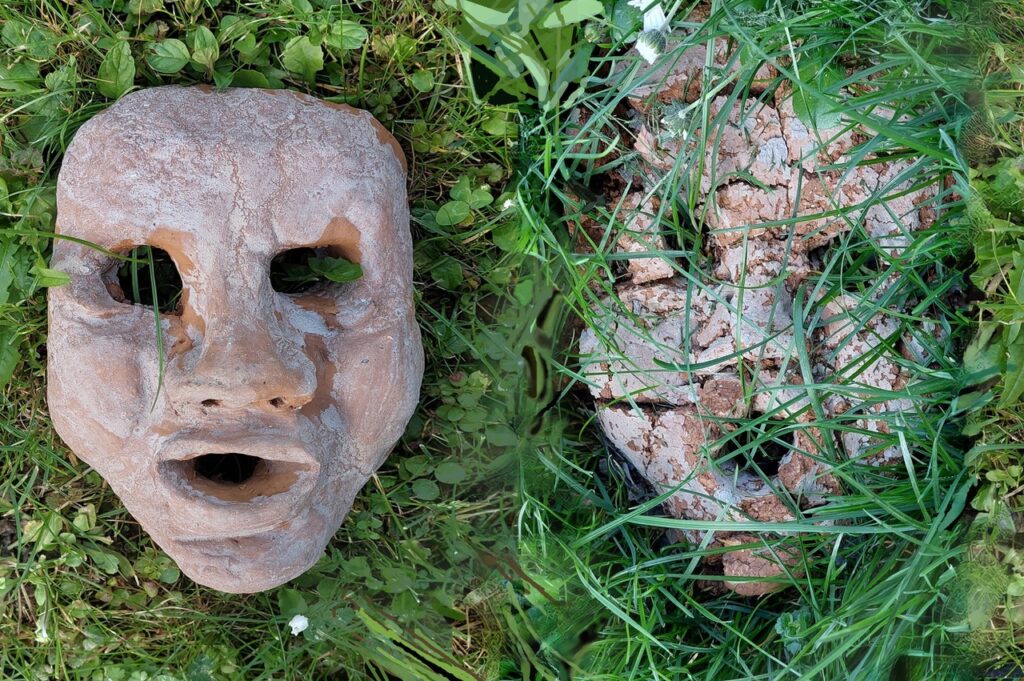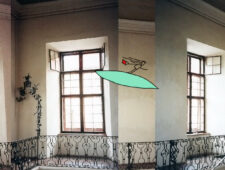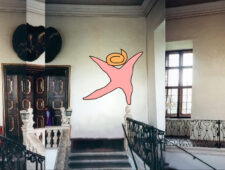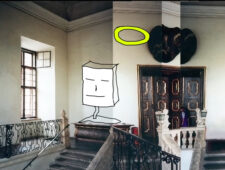Monika Schönbacher-Frischenschlager, ANTHROPOZÄN FINAL, 2025, Lehm, Zement, ANTHROPOZÄN FINAL, 2025, clay, cement
With START AGAIN: NEW VIEW the artists
GUKUBI MATO,  Renate Kordon, Monika Schönbacher-Frischenschlager
lead  the visitors to the footprint of the Anthropocene, hard, humorous and with emphasis.
What do people come up with to counteract the entropy of the decay of their world?
Restraint must be imposed on the more and more and better “achieving” of life.
The physical non-action of the body leads to obesity, to illness.
Getting the comfortable in the lap makes the history of the creation forgotten and the forgetting makes the gray cells atrophy.
The transmitter tum on all levels leads in steps to independent thinking and acting on a level of consciousness that gives man and humanity a chance of survival.
Curator: Irmi Horn.
Opening by GR Dr.in  Claudia Unger and speaker Christina Töpfer Editor-in-chief CAMERA AUSTRIA
GUKUBI MATO
愚首é”ĺľ’
Martin Guevara-Kunerth, *1989
Tom Biela, *1987
live an work in Graz/Ă–sterreich
Coming from backgrounds in architecture and photography, both artists explore a wide range of topics in their conceptual and process-based works. The spectrum ranges from multimedia projects that engage with the mechanisms of perception, to the exploration of physical phenomena, technological progress, decay, and personal transformation.
They draw inspiration and base their work on collections and observations from (digital) everyday life.
atelier.gukubi@gmail.com
www.gukubi.com
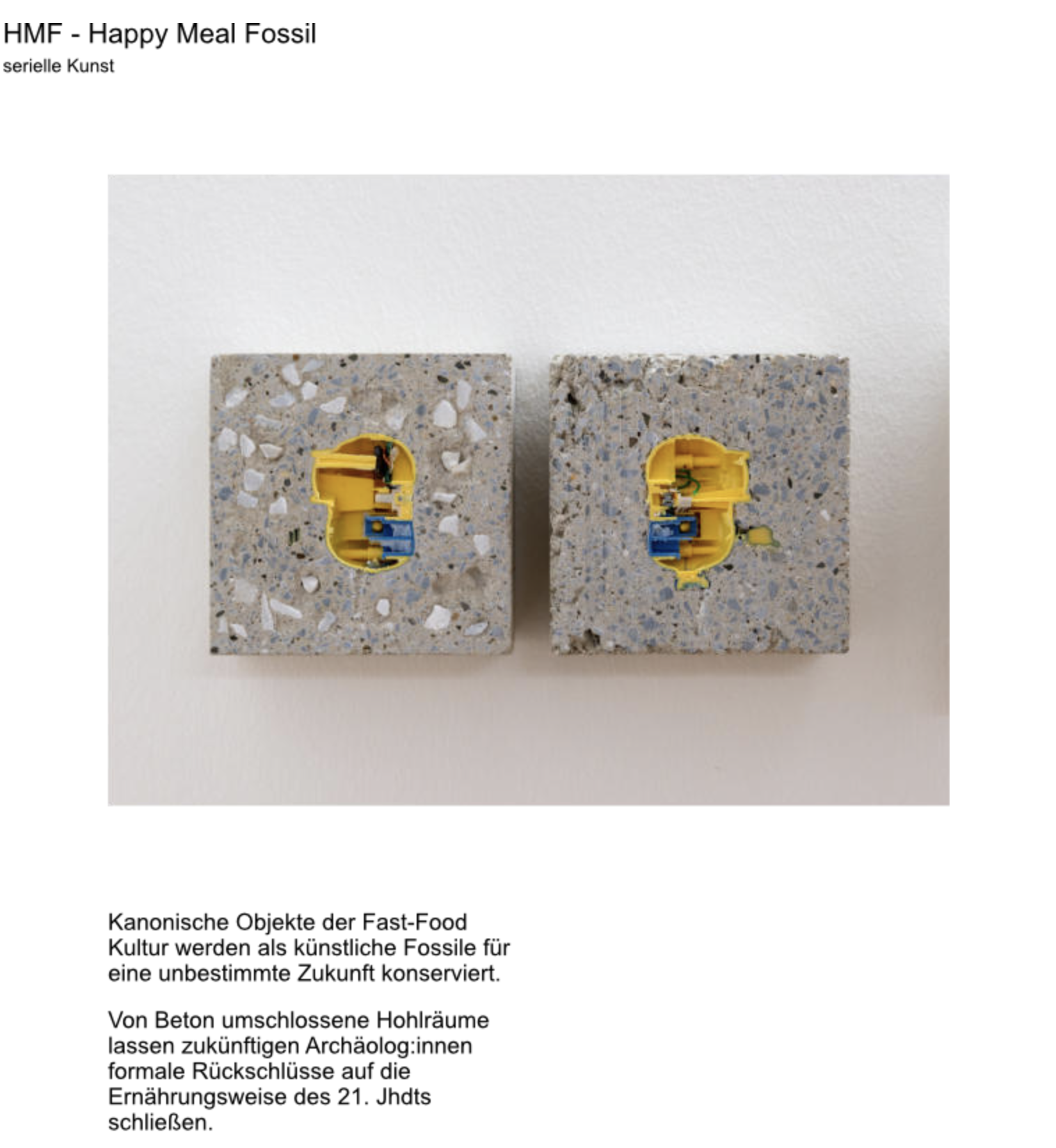
GUKUBIMATO, Happy Meal Fossil
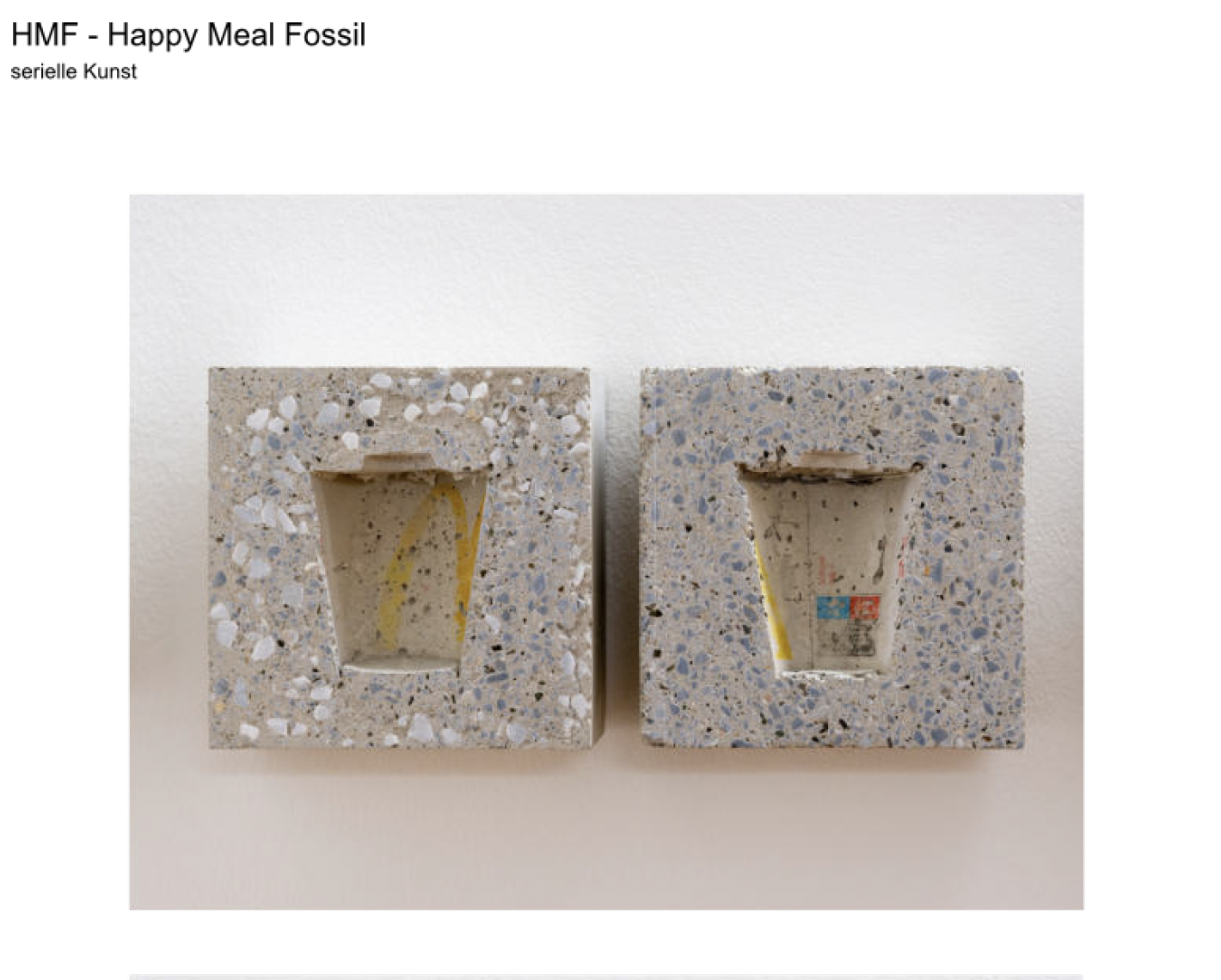
GUKUBIMATO, Happy Meal Fossil
2024 artistic setting: The Grand Artfight Prize – Forum Stadtpark – Graz
2024 SSW23 – Stereophotographic exhibition in the city hall of Graz – Graz
2023 curation of the Land Steiermark Room at the Parallel Vienna 2023 – Wien
2023 Schaufenstergalerie Scharf – Graz
2023 Schaumbad Oberdeck #6 – Graz
2022 The Group Show – Wien
2022 Neue Galerie – Graz
2022 photo graz – Leibnitz
2022 Klimasicherheit – Forum Stadtpark Graz
2022 mentoring of the Ortwein-Stipendiat:innen des Landes Steiermark 2022Â – Graz
2022 offgrid – Wien
2022 parallel vienna – Wien
2022 Retrospektive Perspektiven Workshop – steirischer Herbst – HTBLVA Ortwein – Graz
2021 photo graz – Graz
2019 Neue Galerie – Graz
2016 Potentiale – Feldkirch
2016 photo graz – Graz
2015 Olohuonenäytelly Festival – Helsinki
2015 Art Design – Feldkirch
2015 Academy at Paris – Graz
2014 2. Designbiennale – Istanbul
Renate Kordon studied architecture and graphics in Graz and Vienna, did a master’s year with Maria Lassnig. Her artistic focuses are animated film, drawing, installation, art in public space and film rooms. After several scholarship stays in Paris, Rome and Canada, she taught at the University of Artistic Design “Labor Animation” in Linz, as a guest professor “City Scape Drawing” at the LIT in Detroit and in Dundas, Canada. Her animated films, drawings and installations were exhibited in the Neue Galerie Graz, in the Dunas Valley School of Arts in Ontario and in the Vienna Secession. In 2013 her monograph “Renate Kordon – Lebenslinien/Life Lines” was published in the “edition die angewandte”. From 2007 to 2010 she was co-curator and co-organizer of Asifakeil TrickfilmKunstraum at the MQ Vienna and founded the Institute for ZEITverschiebung in Graz in 2010.
​Renate Kordon’s work ranges from the giant mobile at Spielfeld border to miniature film boxes and portable animated film brooches, from pen and ink drawings to steel sculptures. It is a multifaceted play with dimensions, with lines and perspectives, with the fictions and realities of perception: space, time in motion.
The versatile, sensitive and humorous Renate Kordon shows the short film “Dancing Sculptures”, 2024/25, 1min 38sec. It relates man and thing, illuminates dependencies and thus opens the view into the knowledge of our being and our finity.
Also „The Human Mind is Infinite“, 2000, a Cibachrome print of hand- and computer-generated drawing. Black negative material scratched with a razor blade was scanned and overlaid with cartoon-like line drawings. 78 × 120 cm.
- Renate Kordon, “Dancing Sculptures”, 2024/25, Video-Stills
Monika Schönbacher says: Actually, we should be aware that the earth is actually a sinning ship for humans. Nevertheless, we dance to the death. But then …
Grass grows over human history.
Nature will regain its right.
Their dead, half protruding from the earth, formed from clay will become over time by grass and herbs – and overgrown and eventually disintegrate.
Do they show remorse, fear because they act against their knowledge or do they feel pain that they impore for others? Maybe the artist wants that. Or even people with empathy?
But how do they often say? Behind me the flood!
The artist, born in Graz, Monika Schönbacher-Frischenschlager, completed a degree as a Dipl. Educator, as she worked until 1991 and also passed on her knowledge and skills as a lecturer in the Styrian teacher training in the field of art. From 1991 she devoted herself entirely to art. With her works, she is represented in numerous exhibitions at home and abroad. Some works are permanently exhibited in public buildings.
The artist is a woman who observes nature in all its facets, in its beauty and cruelty. As a rational person, she loves balanced justice and values the richness of diversity. In her work, she has been dealing with topics that have to do with the destruction of our habitats out of economic interests for more than 30 years and also critically examines social and social dogmatic conditions of our culture.
The artistic quality of the work or its aesthetics should not disguise the lack of aesthetic statement – on the contrary, the open contradiction between pictorial aesthetics and image statement should be a reason to reconcile our actions with our aesthetic perception. She thus directs the viewer’s gaze not only to visually deterceptible phenomena, but also to her own perception, which she invites her fellow human beings to question.

